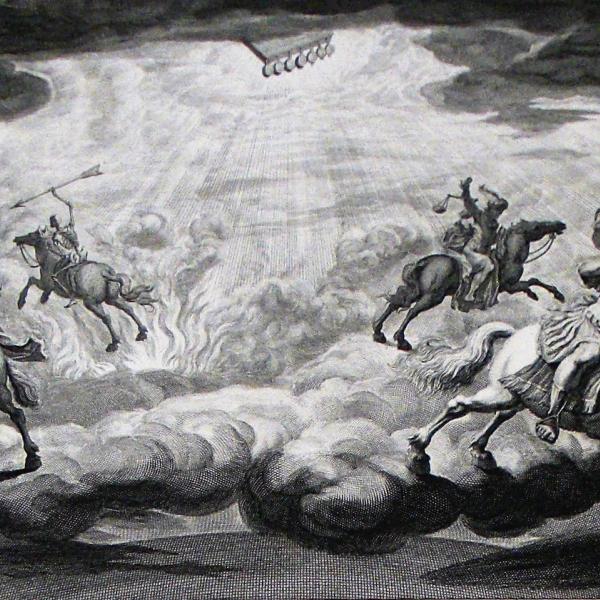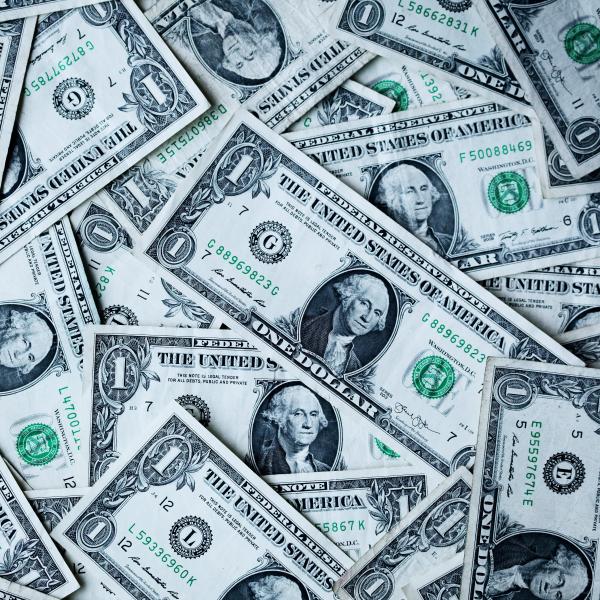When you look at a painting by Claude Monet or Pablo Picasso, what do you really see? Mark Rollins, a professor of philosophy and the director of the performing arts department at Washington University in St. Louis, shares his fascination with both cognitive science and visual art. As Rollins explains, art can be viewed as a game between two brains. Here, he gives us a glimpse into one of Monet's hidden strategies.
Transcript
Claire Navarro: Thanks for listening to Hold That Thought. I’m Claire Navarro. For this week’s podcast, I had the chance to talk with Mark Rollins, professor of philosophy and chair of the performing arts department here at Washington University in St. Louis. Dr. Rollins is a philosopher with a passion for the arts. Over time his interest in the philosophy of mind, the philosophy of art, and the philosophy of science led him to start thinking about some fundamental questions about art. Questions like:
Mark Rollins: What are pictures anyway? How are pictures different from other kinds of representations like words or graphs or charts?
CN: And, how do human minds and brains react to pictures? To start answering these kinds of questions, in recent years Rollins has focused much of his research on one thing that makes a piece of art, like a painting, different from something like a driver’s license photo. That is: style.
MR: Pictorial artworks have special dimensions, and one of the dimensions that they have is that artists use stylistic devises. So a picture painted in the Cubist style like that Picasso on the wall is very different from a picture painted in a Mannerist style or a Baroque style.
CN: Style can help explain why two paintings of the same bowl of fruit, or even the same person, can look completely different. Some styles you’d probably recognize. Think about Impressionism, a movement that started in France in the 19th century. In Impressionist works, painters often use small, visible brush strokes to try to show light and movement, instead trying to capture precise details. The artist Claude Monet is a famous example.
MR: One of the characteristics of Monet’s work and other impressionist works is that the paintings have a kind of vibrancy to them. The idea is to capture the momentary experience of the scene in a static painting. The use of light and shadow and spatial imprecision—these are the hallmarks of Impressionism. The question is what is Monet doing to achieve that effect.
CN: To think about this question, researchers have to consider how our eyes and brains process anything we see. Neuroscientist Margaret Livingston offers one well-known explanation. Livingston says that vision includes both a “what” system and a “where” system. In the “what” system, cells in the center of the retina respond to fine-grain details and help us recognize objects. The “where” system, on the other hand, allows us to understand where an object is located. The “where” system relies on something called luminance contrast, or brightness and darkness.
MR: Generally speaking, I’ll locate objects in space where there are striking contrasts between light and dark.
CN: This is why lots of paintings have dark backgrounds and are kind of lit up in front. The contrast helps us see depth. Monet, however, doesn’t always use luminance contrast in this way. For an example, let’s think about a series of paintings he made. The paintings are of fields full of beautiful poppy flowers.
MR: If you look at a painting—one of the poppy field paintings—you’ll see that there are hundreds of small heads of flowers in a field that extends into space, and the poppy flower heads are bright red-orange in color set against a kind of blue-grey background.
CN: You may be able to picture one of these paintings. They are very well known. I actually even have a print of one of them at home. And when you look at the field, it’s easy to imagine the flowers waving in the breeze. Monet really seems to capture not just a static moment, but the experience of being there.
MR: There is a kind of dynamism to the painting that is part of its power, part of its aesthetic impact. And the reason that you have that sense is that the colors are actually equiluminant.
CN: That’s Equiluminant, or equal luminance. Instead of having a lot of contrast between light and dark, the poppy fields have hardly any contrast. The flowers are bright – the color really pops out and makes them easy to see. But the surrounding grasses are also bright. The difference between the flowers and grass is really based on color, not lightness or darkness.
MR: Livingston shows this by removing the color from the painting, making it into a grey-scale image, and what happens in that case is that many of the flowers simply disappear.
CN: That’s right. The flowers disappear. It turns out this is one trick you really can try at home. I took a picture of my poppy fields poster, then used a filter to make it black and white, and almost all of the flowers were gone. How does this happen? According to Rollins, equiluminance has an effect on our brains. By making this style choice, Monet basically disables your brain’s “where” system.
MR: He has forced the “what” system to take on the job of the “where” system, a job it would not normally perform.
CN: Because the ‘what’ system isn’t really designed to locate objects, it doesn’t do that great of a job. This explains why the painting has such a sense of movement. Your eyes see the bright red flowers, but your brain isn’t exactly sure where they are. Rollins believes that Monet, and many other artists and styles, create this kind of interaction between your what and where systems. And he also thinks that Monet intended to create this effect. Even if he didn’t know exactly how the brain and eyes worked to make it happen, Monet wanted viewers to see the flowers the way he did. Rollins talks about this interaction between artist and viewer as a game-like encounter.
MR: The painting is kind of a stand-in for the artist as one of the players in the game.
CN: The other player is you or me or anyone who views a piece of art. For Monet, using equiluminance was one of his strategies in the game. But just because Monet makes the first move doesn’t mean he makes the last. After all, paintings aren’t the only things with style.
MR: Just as you have styles of behaving, styles of walking, styles of doing all kinds of things, there are cognitive styles, an idea term that psychologist Ellen Winter coined many years ago.
CN: Rollins believes that every person’s brain reacts to works of art in different ways. Humans have unique ways of processing information, and also a person’s beliefs and background can affect how they view and react to art. All of these differences in perspective help make up our own personal viewing strategies.
MR: So when you are confronted with the devices in the painting, which are designed to cause a response in your brain, it is possible that your brain will not respond in the way that the device encourage, at least fully.
CN: This kind of reaction, according to Rollins, is all part of the game. In response, the painting continues to exist and is always willing to go another round – in the case of Monet’s poppy fields, long past the life of the painter. The artist’s strategies and style and the painting’s and beauty continue to inspire us, and perhaps challenge us.
MR: In a certain sense, if I am a good chess player, I want you to be a good chess player, too. I am hoping that you will do something that challenges me. Likewise, in the case of art.
CN: The goal of this game isn’t so much about winning or losing. It’s about having a good game. In that respect, the ‘opponents’ work together.
MR: One way to think about this is that, just like any game, as the game unfolds over time, there will be a sequence of moves. Then there is a kind of resolution.
CN: For many of us, that resolution is a greater appreciation for a piece of art. For Rollins, his many encounters with art and artists have led to an upcoming book about cognitive science and style.
MR: The question being: can there be a science of style? Can cognitive science tell us, when the perceiver looks at a work of pictorial art, are there processes that can be identified in the brain that explain how the relation between style and content gets to be understood. I think the answer to that is yes, too. So far, I haven’t quite completed this book-length project that I’ve been working on on that subject. But I am very animated about it and interested in working it through.
CN: Many thanks to Mark Rollins for joining Hold That Thought. For many more ideas to explore, including more from our ongoing series on the human brain, please visit us online at holdthatthought.wustl.edu. You can also find us on Facebook and Twitter or subscribe to our weekly podcasts on Stitcher, iTunes, PRX, or SoundCloud. Thank you for listening.
Audio Credits
MAURICE RAVEL, SONATINE NO. 1; CLAUDE DEBUSSY, ARABESQUE NO. 1.




